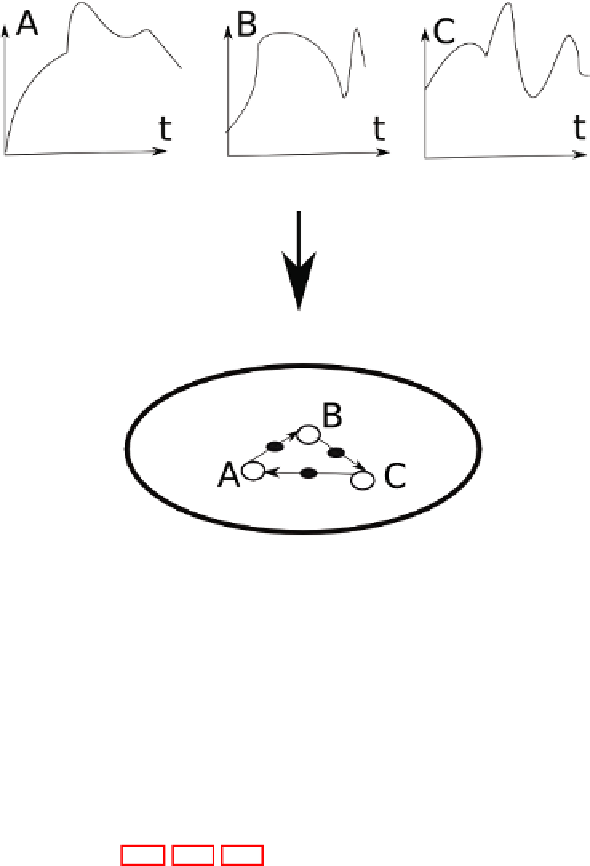Information Technology Reference
In-Depth Information
Fig. 3.39
The general schema of metabolic paradigm in dynamical inverse problems
expressions. Given the huge number of different genes, a clustering phase is nec-
essary to collect all the genes that provide the same response, in time, to the
perturbation. When this is done, after some statistical elaboration of data and a
normalization of the measurements, it is important to discover the logic of inter-
actions of these clusters of genes during the effect of this perturbation. This can be
performed by using an MP grammar, and then by reading it in terms of classical
gene regulation networks. This is an example of the utility of the MP paradigm in
a field that apparently does not present metabolic phenomena (in classical sense).
The following Figs. 3.40, 3.41, 3.42 provide seven interpretations of basic gene
regulatory phenomena where the representation of these gene regulation mecha-
nisms are accompanied by the corresponding MP graph representation. From the
results we got, in a specific analysis of medical interest, this approach provided
new clues in the explanation of the regulatory mechanisms involved with a specific
cancer pathology (see [109] for more details and for other applications to medical
problems).
In a first approximation MP systems can be viewed as discrete approximations
of metabolic models based on ordinary differential equations (ODE), by means of
recurrent difference equations. Namely, for very small temporal interval
τ
,fluxes

